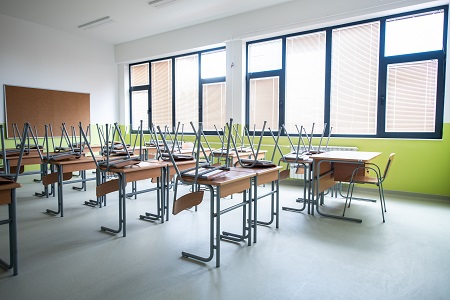
December 28, 2020 | Lynn Schear
Where will all those K-12 dollars go? MCH asked an expert
The latest round of pandemic-related economic stimulus legislation to pass Congress includes a whopping $82 billion for education. Like the CARES Act signed into law in March, it gives states and local decision-makers wide discretion on how to spend it.
In addition, President-elect Joe Biden has indicated that he will prioritize getting children back in classrooms with improved sanitation and safety measures and smaller class sizes, saying, "You’ve got to pay for this stuff."
Phyllis W. Jordan, editorial director at the Georgetown University think tank FutureEd, says there are several key takeaways for those looking to help schools in 2021.
K-12 money will be distributed similarly among districts, but there’s a lot more of it this time around. The Title I standards that helped divide CARES Act education funds last spring will determine specific district allotments, but the $54 billion K-12 pot is almost four times as big as the CARES money set aside for K-12.
One possible priority will be addressing learning loss. Some kids, especially those who are economically disadvantaged, are lagging four to five months behind benchmarks in English and math. For those who don’t engage as well online, especially younger grade-school students, the consequences of these learning gaps among K-12 students could be far-reaching, a fact not lost on many governors and districts.
Schools may earmark stimulus money for services to help them catch up – in the form of in-person tutoring, online tutoring or other virtual acceleration programs. Jordan said she expected to see a continued trend toward K-12 principals investing in social-emotional learning tools, as well as other virtual outreach for children emotionally affected by the pandemic.
EdTech will continue to be popular as schools find more advantages and opportunities within virtual learning models. Increasingly, educators are looking beyond the initial spend to leveraging technology for instructors to reach students on snow or sick days post-pandemic – and much more.
Schools may be able to offer AP and other advanced classes to a more diverse set of students, or even push start times back for teens who struggle with early morning schedules. In addition, some students are thriving in virtual environments like never before. Whether they were distracted by in-person environmental factors or faced social struggles like bullying, some students known as school refusers are showing marked academic improvement – and educators are taking notice.
"These were kids who were anxious and depressed. They didn’t want to come to school. Some are really thriving right now, because they can finally get the instruction they need," Jordan says.
Kindergartens could be facing an explosion of enrollment in the fall. Because many parents held younger kids back in 2020, preschools and pre-K providers, as well as kindergartens, will be helping them make up for lost time alongside students who remained on normal timelines.
Going forward, a need for safer physical learning spaces will drive spending. From plexiglass barriers to improved HVAC, some schools will be using stimulus dollars to rethink design and traffic flow, as well as making other building upgrades, especially over the summer.
"Ventilation is going to be huge, because so many schools have inefficient and aging systems. Ventilation is so important," Jordan says. "The bill specifically mentions it, and so you’ll see some investment in that area."
Updating HVAC systems could also help schools reduce their carbon footprint, dovetailing with the increased focus on climate change touted by the incoming administration.
School needs will vary widely according to opening status and timelines. President-elect Biden has said he wants to focus on getting kids back into classrooms in his first 100 days in office.
But there is no one-size-fits-all solution. For those districts opening their doors, advanced cleaning and PPE will be at the top of their lists. For districts that might have to close due to local case counts or offer a hybrid model, more technical and communication needs will take priority.
Stay tuned: MCH will continue to keep you updated in this space as legislation is finalized and analyzed.
Need More Time?
Due to inactivity, you will be logged out within 5 minutes.
To stay logged in, please select Stay Logged In.





 Logout
Logout